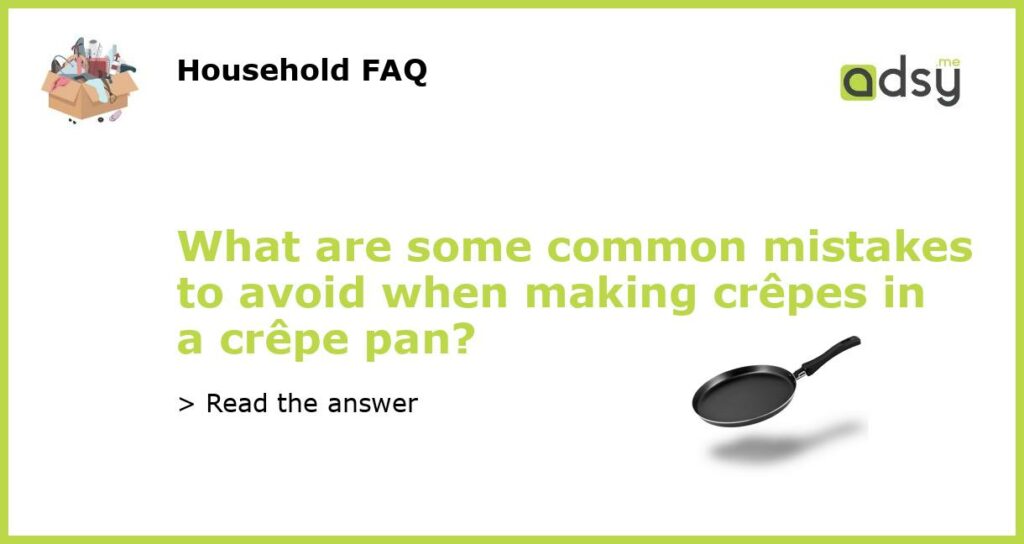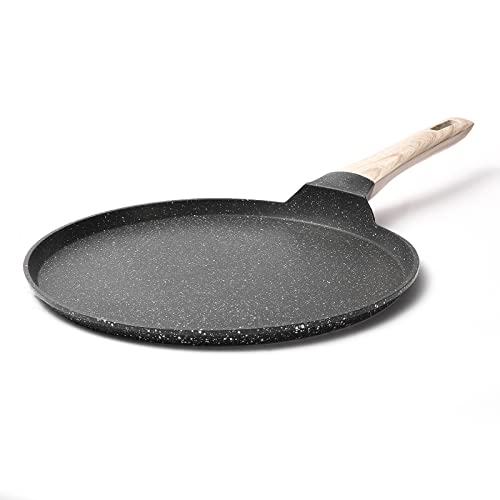Choosing the wrong pan
One of the most common mistakes when making crêpes is choosing the wrong pan. A crêpe pan, also known as a skillet or griddle, should be non-stick, shallow, and have a flat bottom. The non-stick surface ensures that the crêpe doesn’t stick to the pan, and the shallow design allows the batter to spread evenly. A flat bottom also helps to ensure that the crêpe cooks evenly. Avoid using a regular frying pan or a deep skillet, as these will not produce the desired results.
Not letting the batter rest
Another mistake people make when making crêpes is not letting the batter rest. Resting the batter allows the gluten in the flour to relax, resulting in a more tender crêpe. It also allows the flavors to develop. Typically, crêpe batter should rest for at least 30 minutes before cooking. Cover the batter with plastic wrap or a lid while it rests.
Using the wrong amount of batter
Using the wrong amount of batter is another common crêpe-making mistake. Too much batter will result in a thick and doughy crêpe, while too little batter will result in a thin and delicate crêpe that tears easily. The ideal amount of batter to use depends on the size of the crêpe pan, but a good rule of thumb is to start with 1/4 cup of batter and adjust as needed.
Overfilling the crêpes
When making crêpes, it’s important not to overfill them. This can cause the crêpe to tear or break when you try to fold it. The filling should be spread evenly over the crêpe, leaving a small border on the edges. Fold the crêpe in half, and then in half again to make a triangle. Alternatively, roll the crêpe around the filling, tucking in the sides as you go.
Not cooking the crêpes long enough
Finally, not cooking the crêpes long enough is a common mistake. Crêpes should be cooked until they are lightly browned on both sides. This can take anywhere from 1-2 minutes per side, depending on the heat of the pan. If the crêpe is still pale or the batter looks wet, it needs to cook longer. Don’t rush the cooking process, as this can result in undercooked or unevenly cooked crêpes.






